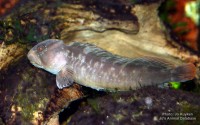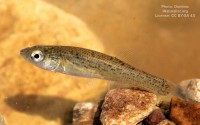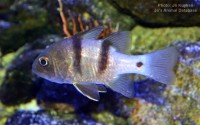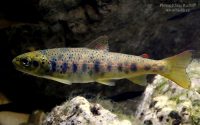Lepisosteiformes - Gars

Classification
Description
Gars are members of the Lepisosteiformes, an ancient holosteian order of ray-finned fish; fossils from this order are known from the Late Jurassic onwards.
The family Lepisosteidae includes seven living species of fish in two genera that inhabit fresh, brackish, and occasionally marine waters of eastern North America, Central America and Cuba in the Caribbean.
Gars have elongated bodies that are heavily armored with ganoid scales, and fronted by similarly elongated jaws filled with long, sharp teeth. Gars are sometimes referred to as garpike, but are not closely related to pikes, which are in the fish family Esocidae.
All of the gars are relatively large fish, but the alligator gar (Atractosteus spatula) is the largest – the alligator gar often grows to a length of over 2 m (6.5 ft) and a weight of over 45 kg (100 lb), and specimens of up to 3 m (9.8 ft) in length have been reported.
Unusually, their vascularised swim bladders can function as lungs, and most gars surface periodically to take a gulp of air. Gar flesh is edible and the hard skin and scales of gars are used by humans, but gar eggs are highly toxic.
Fossilized gars have been found in Europe, India, South America, and North America, indicating that in times past, these fish had a wider distribution than they do today. Gars are considered to be a remnant of a group of bony fish that flourished in the Mesozoic, and are most closely related to the bowfin. The distribution of the gar Lepisosteidae in North America lies mainly in the shallow, brackish waters off of Texas, Louisiana, and the eastern coast of Mexico, as well as in some of the rivers and lakes that flow to them. A few populations are also present in the Great Lakes region of the United States, living in similar shallow waters.












